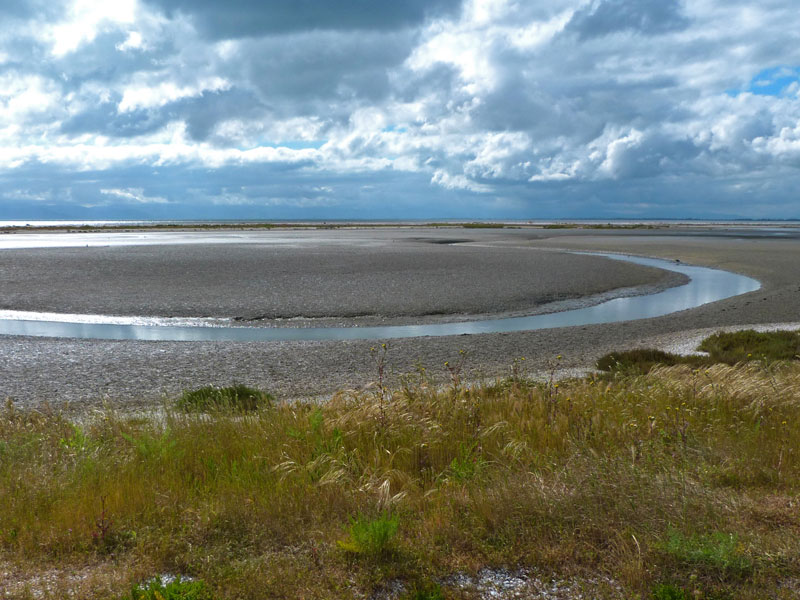Firth of Thames
Other NZ Ramsar sites to visit:
The Firth of Thames
The Firth of Thames is well worth a detour to view the thousands of wader birds visiting annually. Its mudflats, shell banks, grass flats, saltmarsh and mangrove forest form one of the three most important coastal areas for shorebirds in New Zealand.
The skies above the shallow estuarine waters of the Firth are often flecked with flocks of migratory birds on the wing. In spring, godwits, knots and other migrating birds start arriving from as far away as Siberia and Alaska. In autumn, these birds fly north while at the same time native birds from other parts of New Zealand start arriving on the Firth. The most numerous of these are pied oystercatchers and wrybills.
A major feature is the 2 km wide Miranda shell bank, a globally rare land form known as a chenier plain, comprising old beach ridges left inland as the shoreline moves towards the sea.


The Pūkorokoro Miranda Shorebird Centre has information and displays to help visitors find the best spots to view birds.
Key facts for visitors
- The Shorebird Network Site is a large (7,800 ha) coastal reserve, comprising shallow marine water, mud and grass flats, mangrove swamp, salt marsh, and swampland
- Established as a Ramsar Site: 21/09/1990
- The Pūkorokoro Miranda Shorebird Centre offers information, gift shop, accommodation, and guided tours by arrangement. Tel 09 232 2781
- The Robert Findlay Wildlife Area is an easily accessible place to watch birds, with great views all along the coast.
- Forest and Bird NZ’s Karaka bird hide is open to the public at all times. There are close up views of the waders (near the Goldfields Shopping Mall, Brown Street, Thames). Take the boardwalk through the mangroves to the hide.
- Monument Hill lookout in Thames has amazing views of the area. Take Waiotahi Creek Road to the top, at the north of Thames.
- The rare green mistletoe (Ileostylus micranthus) grows on swamp coprosma and marsh ribbonwood trees in the Miranda area. It has small greenish yellow flowers, yellow fruit when ripe, and looks like a dark green ball in the middle of its host plant. Do not remove mistletoes, they are protected plants, and will die if removed from their host plant.
How to get there
Drive 1.5 hours from Auckland along the East Coast Road from Kaiaua to Miranda.
More information
- Read the incredible story of the Godwit E7.
- Discover the Muddy Feet project, a multiagency approach to protect the Hauraki Gulf including the Firth of Thames.
- Read more about the Firth of Thames in the Directory of Wetlands in New Zealand (see Chapter 13)




















